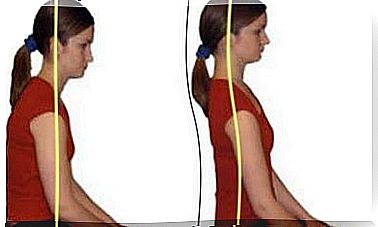Trust Building Exercises For Children, Teenagers And Adults

Confidence building exercises improve both individual performance and group performance. In this extremely interesting article, we’ll show you five of them.
Self-confidence is an extremely important aspect of our mental health. Without it, you may feel insecure in new circumstances or in a group. Therefore, confidence-building exercises should be performed in a group, as feeling comfortable around others plays a key role.
Trust prevents us not only from creating pleasant and safe spaces, but also positively influences interactions with other people. To understand its meaning, you need to think about how you feel and about the physical sensations you experience when you are in an unfamiliar environment.
Surely you are remembering your tense body and mind filled with worries. Now think about how your mood changes when you are with someone you know. You probably feel completely different!
However, remember that trust does not emerge overnight as it takes time and a gradual approach. This makes confidence building exercises a good basis for building trust.
Confidence building exercises for people of all ages
Confidence-building exercises can be performed with children, teens and adults alike, as there is an element of fun in them that can be engaging for everyone .
During each of them, the leader must be present. It will mainly focus on giving instructions to those involved and making sure everything goes according to plan.
Therefore, such a moderator must pay attention to everything, set an example with his behavior and remember about other socio-emotional skills that also need to be worked on.

1. Fall into your arms
This is an excellent trust exercise that improves trust among group members. To start performing them, the group has to be divided into pairs, occupying a large space. You do not need any other materials to conduct it.
The person who conducts the game has to make sure that the partners are mixed up. This means that they cannot have similar physical characteristics or body posture.
Partners should face each other in such a way that their fingertips touch each other. They should also hold hands.
Once everyone is in this position, the moderator should signal for partners in pairs to start leaning back as if they were about to fall. However, it will not come to this, because their partner will protect them from it.
Among the first reactions this exercise will provoke are feelings of insecurity and a bit of dread. After a while, however, all members of the group will begin to relax. At this point, the moderator may make the exercise difficult by recommending you to make a few extra moves.
Such an exercise can be completed after a certain period of time or after completing additional challenges recommended by the tutor.
2. Wind and tree
This confidence exercise is a variation of the previous exercise. In order to perform them, you should have a headscarf or a blindfold, and the best place to carry it out will be an open space.
The participants should stand in a circle. One of the blindfolded volunteers should stand in the middle of it. Then he has to relax the body.
When the trainer gives a signal, the rest of the group will begin to push and shift the person in the center from one side to the other as if they are passing it on to each other. After a few moves, her place in the center of the circle may be taken by another volunteer.
The duration of the exercise depends on whether everyone wants to be in the center of the circle or not. Otherwise, exercise may take 15 to 20 minutes.
3. Walk of trust
This confidence building exercise can be done in pairs in an open space. You need to arrange irregularly shaped items in it, creating a start and finish line as well.
One partner must be blindfolded, while the other partner will guide him in the right direction to safely reach the end of the route.
The blindfolded person will receive instructions such as “Move right”, “Jump over the hoop” and “Take two steps to the left” depending on how the different items are arranged. On the route you can use, for example, hoops, cones and ropes.
The estimated duration of this exercise depends on the route designed. Each partner has to take turns playing each role. It doesn’t matter how long it takes to complete the entire route. It is important to reach its end safely and feel confident when moving forward.
Each of the proposed dynamics increases the level of trust in the group. The finish line can only be reached through cooperation. This means that such an exercise helps the participants understand the importance of working in a group.
4. A fan of praise
To develop a person’s belief in the value of their own merits, it is helpful to work on their self-confidence. At least six people are required to perform this exercise. They must be in a large space that will allow them to line up in a circle.
This is a dynamic that requires prior acquaintance with the people in the group. The group should be provided with pieces of paper and pens or pencils.
At the beginning, each participant must receive his or her own piece of paper and a pen or pencil. The person conducting the exercise will ask everyone to write down their names. When they are finished, he will give them a signal to pass their sheets to the person sitting to their left.
The moderator will advise that each person should write something positive or something they like about the person whose name is on the piece of paper they receive. Additionally, it must emphasize that nothing malicious or inappropriate may be written.
When all participants have finished writing something about other group members, the facilitator will either start reading the cards or ask someone willing to do so. If the participants agree to this, they can delve deeper into the exercise and write more about each person.
This exercise is designed to improve your confidence and self-esteem based on what others see in you.
Another way to do this exercise is to put the cards in a box from which everyone will pull one of them. Then the roles begin to switch.

5. Tell me what you are drawing
The final confidence-building exercise involves breaking the group into pairs and handing each pair of paper and a pencil. One of the partners should start drawing the picture, making sure the other person cannot see it. He will have a few minutes to draw the picture.
When everyone is finished, the person conducting the exercise will signal for the person who created the drawing to give directions to his partner. They will help him recreate the drawing. As the exercise involves giving different explanations, it allows you to develop and increase your expressive and communication skills.
The exercise ends when each partner has recreated the described drawing.
Sharing feelings, one of the goals of confidence-building exercises
When children, teenagers, or adults are done with these confidence-building exercises, they will need to evaluate what they felt, what they liked best, and what they didn’t quite like. Thanks to this, they will be able to express and manage their emotions.
The trainer will invite participants to create a circle and share their experiences. In addition, it is very important to perform the exercises in context and to gain awareness of the importance of trust and good interpersonal relationships in groups.
This helps to create an atmosphere where everyone feels they can safely share their experiences and increases respect for others.









